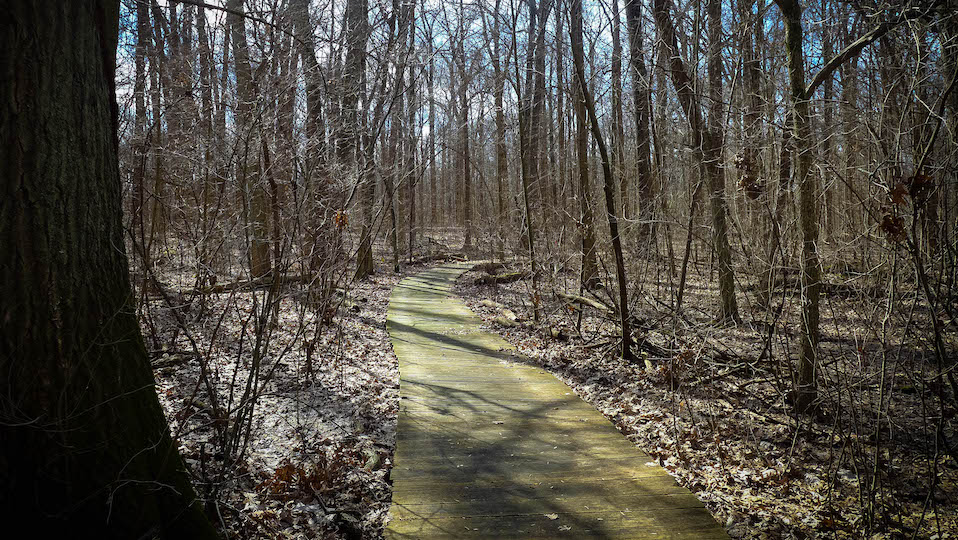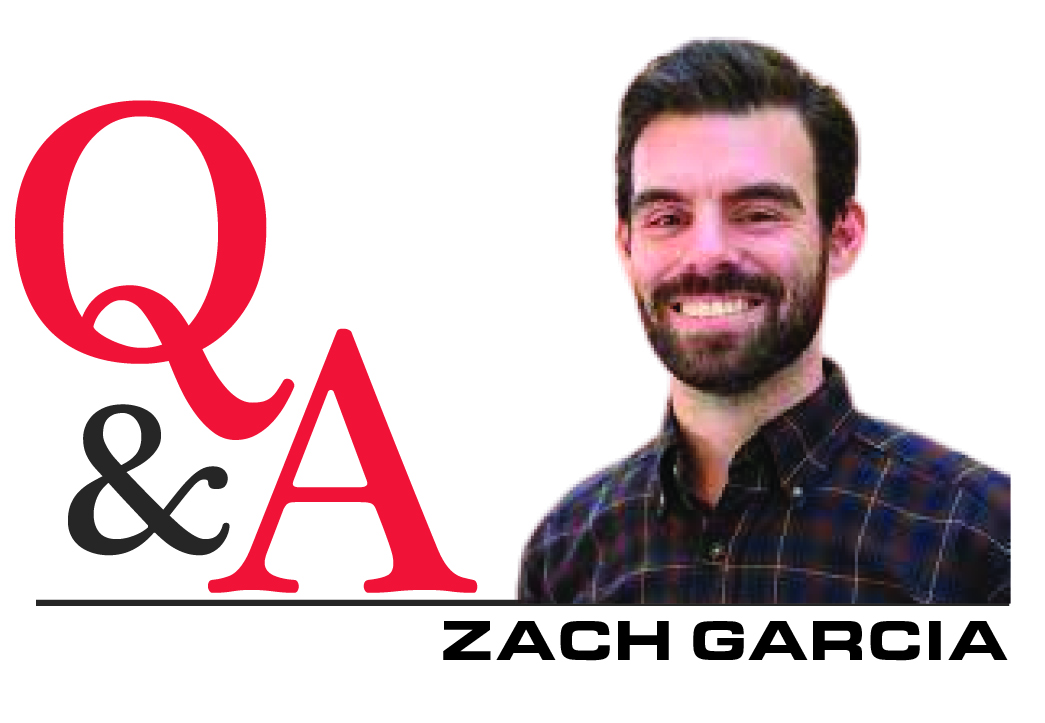Planting roots: A Q&A with Zach Garcia on the expansion of Wesselman Woods in Evansville
Subscriber Benefit
As a subscriber you can listen to articles at work, in the car, or while you work out. Subscribe Now
Wesselman Woods, a not-for-profit organization in Evansville, recently announced a 90-acre expansion to the urban nature preserve.

Executive Director Zach Garcia said the city of Evansville gifted a 16-acre forested middle section of Wesselman Park and a 32-acre area formerly used as a par 3 golf course. The organization also paid $2 million to purchase another 42 acres on Division Street from the University of Evansville.
Garcia spoke with Inside INdiana Business about the significance of reforesting in an urban environment and what the expansion means for the now 310-acre nature preserve.
What makes Wesselman Woods unique?
Wesselman Woods is the largest urban old-growth forest in the United States. We are a state nature preserve. We’re a national natural landmark. Recently, I’ve been saying that Wesselman Woods is the Mona Lisa of ecosystems. We have one of the rarest ecosystems east of the Mississippi River.
There are old-growth forests all over, but this is an old-growth forest in an urban location, which is unheard of. Most of these forests have been cut down due to urbanization and development, but we’re so fortunate to have it smack dab in the middle of Evansville.
Where did the idea to expand the nature preserve originate?
The former golf course, that’s been in talks for years. I remember when I got here in 2019, there were rumors, you know, “Are we going to get that golf course?” It was only in 2020 that there was a solid yes — Wesselman Woods will get the golf course.
The UE property has been something that’s been going on since 1978. I’ve done my best working with our stakeholders at UE, their trustees and Wesselman Woods board members to figure out how we could purchase this property. And with an anonymous donation from a stakeholder, the Next Level Conservation Fund from the state of Indiana, and some of our funds as well, we purchased the property.
Why do you think UE and the city of Evansville decided to sell and donate these areas to Wesselman Woods instead of private developers?
People love Wesselman Woods. Our supporters, they’ll do anything for this forest.
Is this type of project common? Restoring land to its original form versus clearing the area for commercial development?
No, it’s not common. That’s what’s so special about this. We’re in the middle of the city, and we just gained 90 acres. That’s unheard of. Absolutely unheard of. I hope people appreciate that this is a huge commitment for our city and for our communities.
Why is a project like this difficult to pull off?
Money. People want that money, and selling land to get whatever they want for it will always have precedence over the environment. And that’s sad because it shouldn’t. It should be environment first and then business second. And with this, it truly is environment first, business second.
What are the nature preserve’s plans for the additional 90 acres?
We’re looking to reforest both properties. And when I say reforest, I’m not talking about going and buying trees at Lowe’s or any local nurseries. I’m talking about working with the Department of Natural Resources in Indiana to collect the seed bank here at Wesselman Woods, germinate those seeds, and then plant them in these properties.
A lot of people have been saying, “Well, that’s going to take forever. That’s going to take so long. Why would you do that? Why wouldn’t you just go buy trees and plant them?” Because our ecosystem is going to look different very soon. And the trees that we have at Wesselman Woods are 350 and 400 years old. These trees have seen wet, dry, hot and cold. They’ve seen that for 400 years.
When we’re thinking about reforesting these areas, we need to start thinking about not just the tree species, but the genetic material in the tree species. We want a tree that is genetically healthy. We want a tree that is genetically rich. We want a tree that’s genetically diverse. And this is what Wesselman Woods provides.
With the climate change we’re seeing now, these trees are going to be the ones that can withstand it. Not the ones that were growing from genetic material that is reproduced over and over and over again and quickly.
Do you have other plans besides reforesting?
Yes. On the (former golf course), we’re looking at having a new nature center that will complement the old nature center. It will act as a visitor center not just for Wesselman Woods but also for Roberts Park and other park amenities. Inside that, there’ll be a community gathering space. We’re also looking at having an urban ecological research center.
What’s the timeline for this expansion?
It’s going to be a long time. You have to be patient. We’re thinking about 2023, but we need to be thinking about 2073. That’s our goal right now. But I’m hoping to have a lot of this done by 2026.
Is Wesselman Woods doing the work on its own, or will you have help?
It’ll be on our own. So, for the folks who are reading this, if they want to help us, if they want to fund this, if they want to see their name on a building or an area of the forest, they can give me a call, and we can make it happen.
Do you think reforesting is possible in other areas of Evansville?
Yes, definitely. I can think of 15 places that could be reforested. And that’s the charge of Wesselman Woods right now: getting these two properties settled and then seeing where we can tentacle off and really start reforesting this city.
This is just the beginning for Wesselman Woods. Anything in an urban environment that can be reforested is so important and so critical, but also protecting what we already have. If we do have forested areas, let’s keep them. Let’s not cut them down or commercialize them or anything. There are enough empty and abandoned buildings around here that someone can move into and figure things out.
Anything else you’d like to add?
This took a lot of work. A lot of people think it’s just a walk in the park, and it’s not. Managing a forest is a lot of work. Having programming, marketing, operations, administration, maintenance, it’s a lot of work. I hope people recognize that.
For a long time, Wesselman Woods wasn’t taken seriously. It was just the sleepy nature center. But a shift happened this year, and we’re taking it to the next level. When we’re thinking about climate change, environmental stewardship, environmental appreciation, this is something that people are serious about, and we are serious about it. And I just want to get this done.
